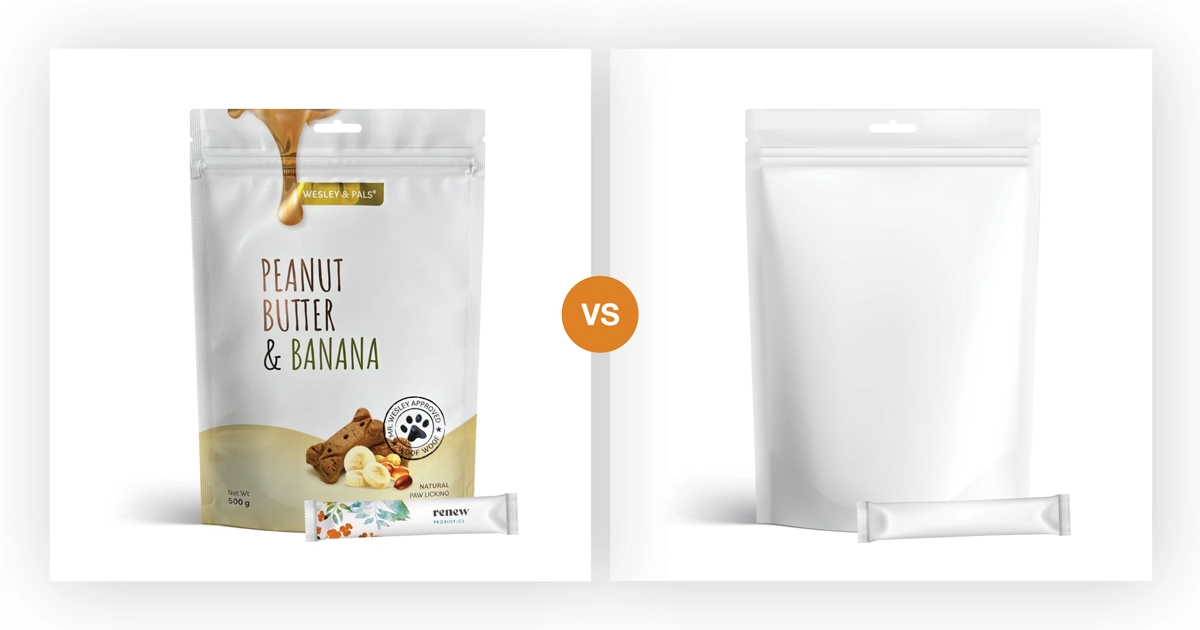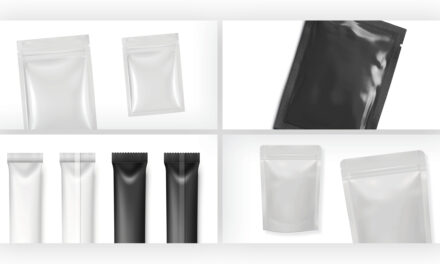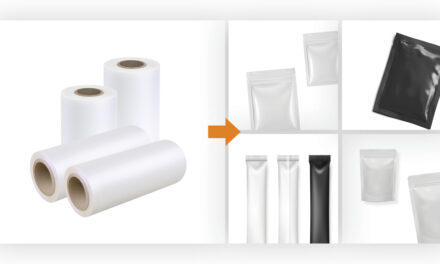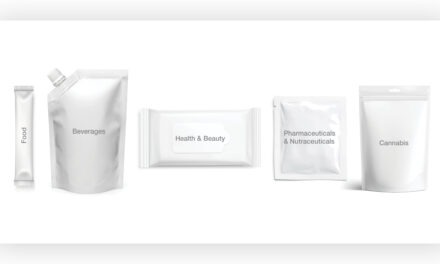THE DUALITY OF FLEXIBLE PACKAGING
Long valued for its usefulness in shipping and selling all sorts of products, flexible packaging design has always centered first and foremost around practicality. Unlike folding cartons, rigid boxes, and other general packaging applications, flexible packaging frequently makes direct contact with the packaged item. For food products, it is crucial that flexible packaging prevents spoilage, mold, and contact with outside contaminants. For other types of products, flexible packaging must prevent leaks, leeching of chemicals, and tears from sharp objects. If a package cannot fulfil these basic requirements, the rest of its design is irrelevant.
However, in recent years, the visual and haptic appeal of flexible packaging has grown ever more important as brands and converters vie for a larger share of a growing market. It is not enough for packaging to perform well; it must also be visually appealing enough to immediately catch the attention of consumers. Average order volumes are decreasing as the number of SKUs on retail shelves increase. Competition is more fierce than ever, and some of the most successful flexible packaging converters are capitalizing on this trend by offering brands innovative, creatively designed packaging that still maintains its structural integrity.
In this article, we will take a brief look at three ways flex pack converters can implement interesting design elements into their packaging without sacrificing performance quality. These tips can be applied to a wide range of packaging formats and structures, which means they are ideal for expanding into different markets and product types.
HOW TO BALANCE DESIGN AND FUNCTION IN FLEX PACK
The aesthetic elements of flexible packaging may usually be applied towards the end of the process, but they cannot be considered an afterthought by any knowledgeable converter. To integrate creative designs in a way that still preserves the integrity of the package and the products they hold, each material and process must be carefully planned out to ensure the package meets every metric in terms of performance, cost, and appearance.
Use Specialty Print Web Finishes
One of the simplest and most reliable ways to enhance the design of a package without sacrificing performance is to utilize an overlaminate film in the package’s print web layer. Whether the film is reverse printed or simply protects the ink printed on the layer below, print web laminate finishes provide a protective top layer that can also enhance the package’s design. The overlaminate may be either a thermal laminate, which includes an EVA adhesive, or an adhesive-free film. The type of print web overlaminate selected may depend on the type of equipment the converter has as well as the end application. Thermal lamination is excellent for increased speed to market and packaging produced on-demand. Films are ideal for solventless, solvent-based, or water-based, and energy-cured lamination, all of which give the converter greater control over the construction of the package. In either case, a premium finish typically does not affect the overall structure or performance of the package, so converters have creative freedom to offer any finishes they choose.
Both thermal laminates and adhesive-free films come in a wide range of specialty finishes that give packaging an extra appeal, greatly increasing its value and ability to attract consumers. These finishes can give packaging an interesting texture, create a holographic effect, or provide superior protection from scratches and scuffs. Below are some of the most popular specialty print web finishes from Nobelus.
- Karess® – This soft-touch finish gives packaging a rich, luxurious feel that instantly conveys premium quality and uniqueness. Because it is a matte finish, it helps prevent reflections and glare from obscuring the printed design.
- FineGrit™ – Durable and rugged, this finish gives prints a light sandpaper texture to provide contrast from popular soft-touch trends. Its gritty feel is produced through a curing process, so it has no loose particles that can be rubbed or scratched off.
- ScuffProof® – While many films can provide some level of resistance to scratching, this finish is completely impervious to damage from scratching, scuffing, and burnishing due to its hard-coated surface.
- Rainbow Holografik™ – Packaging that features this stunning, spectral finish changes through the colors of the rainbow. The pattern has no visible repeats and is extremely durable even with regular handling.
- EcoElement™ CLS – Available in both gloss and matte, this film has a cellulose base. While the laminate version includes a thermally activated adhesive layer, the adhesive-free film is completely plastic free.
Visit our product pages to learn more about each finish and explore options for thermal and solventless lamination. Converters who produce prime labels as well as flexible packaging will discover that these products enable branding to remain consistent across multiple types of print. For example, a brand that sells vanilla-scented bath bombs in a stand-up pouch might also sell vanilla-scented lotion in a tin or jar. This brand will likely choose to do business with a converter who can offer the same soft-touch finish and basic design on both the pouch and jar label, a concept called Cross Market Ingenuity (CMI).
Consider Using Pre-Laminations
Converters who specialize more in the art of aesthetic design than application engineering should not feel limited in the packaging they can produce. For new converters, digital converters, and prime label printers who have recently expanded into flexible packaging, pre-laminations provide an excellent route forward for a range of packaging formats. These pre-made film structures enable converters to focus primarily on the print web and outer design without sacrificing performance.
Pre-laminations are film structures that are assembled before they reach the converter. These structures come in a nearly endless variety of material combinations, making them ideal for all sorts of packaging formats. The print converter purchases the pre-lams needed for their packaging and then is responsible for printing, finishing, and shaping the package. Smaller digital converters that cannot invest in shaping equipment can also purchase pre-formed packaging, such as stand-up pouches. These structures are typically digitally printed and thermally laminated for quick turnaround and speed to market.
Explore Creative Shapes and Fitments
Finally, think outside the press and integrate creative packaging shapes and fitments into the design of the packaging. Like the rest of the design in flexible packaging, fitments must be functional first and foremost. Not every type of package will benefit from fitments, and they naturally increase the price of goods on retail shelves due to increased material costs. At worst, an unnecessary fitment can hinder sales and impact the integrity of the package.
However, a quality fitment on a stand-up pouch or reusable bag can improve both the functionality and the visual appeal of the packaging. They can implement vibrant colors and interesting shapes in a way that amplifies the printed design. In a similar vein, the shape of the package can be used to make it stand out on the shelf while making it easier to hold or carry, such as integrated handles on bagged wine.
STILL CURIOUS ABOUT SPECIALTY FLEXIBLE PACKAGING?
If you still have questions about ways you can combine function with fashion in flexible packaging, reach out to our team by phone or email. Our in-house flexible packaging solutions experts have years of experience on the production floor and can help you devise a strategy for how you can integrate our specialty finishes into your packaging. We value long-term partnerships and want to help your business succeed.





